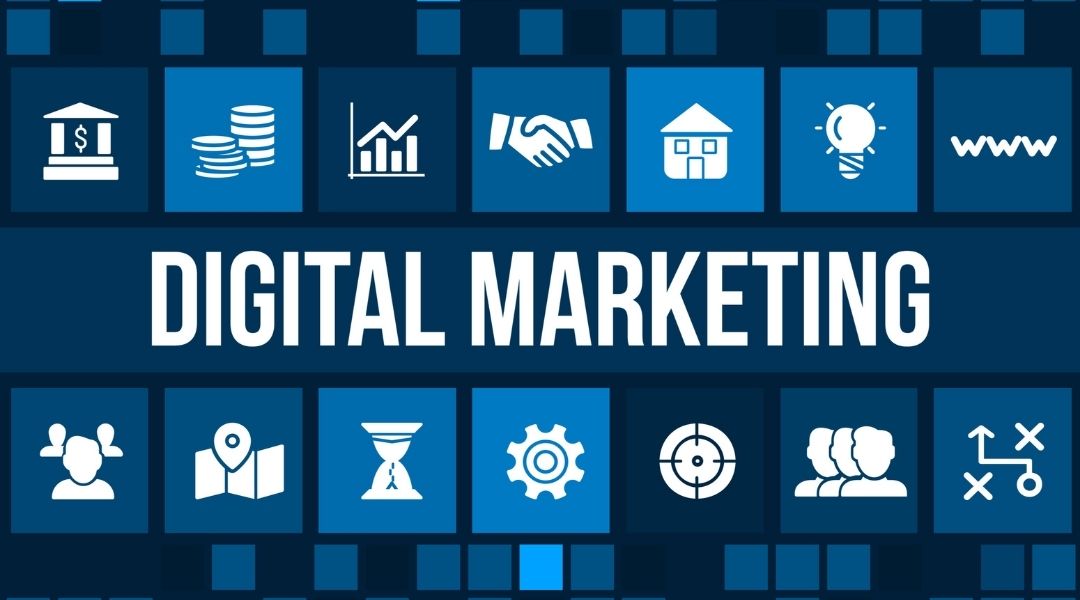Personalized marketing is exploding. AI is the reason why. It’s letting brands get closer to their customers than ever before by understanding what people truly want. Chatbots, personalized content, and purchase predictions? This is what AI-Marketing is gifting us now.
Real-time, actionable insights are generated by this technology as it fine-tunes overarching strategies with the help of machine learning. Imagine having a super helpful pal to assist with your plans. This even changes SEO to be better for voice searches.
With AI’s power, personalization scales up as behavioral data informs targeted ads and emotional intelligence enhances digital interactions. The blend of these elements ensures marketing messages hit closer to home than ever before.
AI Tailors Content to Individual Preferences
AI takes content personalization to a new level by analyzing vast amounts of data, including user behavior and preferences. This results in the creation of unique segments for targeted marketing actions. By doing so, brands can craft messages that resonate personally with consumers, creating stronger connections.
Dynamic content optimization is at work here as well. By using AI, marketers adjust website content and ads in real-time based on what users show interest in or ignore. This leads directly to not just more engagement but also higher conversion rates since people are seeing exactly what interests them without having to search for it.
For anyone looking into AI for digital marketing, these advancements represent huge potential advantages over traditional methods. Traditional methods might have struggled with capturing all the nuances necessary when trying to reach varied audiences effectively.
Predictive Analytics Enhance Customer Engagement
- Boosting Customer Satisfaction through AI Chatbots: Chatbots powered by AI enhance customer engagement significantly. These tools respond instantly to inquiries, offering support 24/7 without delay. By understanding and replying in a human-like manner via natural language processing, they foster loyalty among users. Such immediate assistance ensures high satisfaction rates.
- Real-Time Feedback with Sentiment Analysis: AI-driven sentiment analysis tracks online platforms for real-time customer feedback efficiently. This tool adeptly deciphers emotions behind comments, posts, and reviews across social media sites. Businesses leverage this data to address concerns swiftly or amplify positive experiences easily, helping them maintain strong connections with their clientele promptly.
- Predictive Analytics Forecasts Future Interactions: Predictive analytics is at the forefront of accurately anticipating customers’ future behavior. Using historical data and machine learning algorithms helps companies identify potential trends early on, empowering marketing teams to tailor strategies effectively before actual needs arise efficiently. This forward-thinking approach successfully aids in successfully sustaining relevance and competitiveness agilely in the market landscape.
Chatbots Deliver Customized User Experiences
A personalized experience is now easier than ever for customers. Chatbots are making this happen by creating a seamless interaction between businesses and their audience. Real-time customer service is now possible with AI. It’s become a must-have for successful marketing. Imagine needing help at 3 AM. With chatbots, you get instant answers, no matter the time. This readily available support improves customer satisfaction by leaps and bounds.
AI assistants handle lots of jobs at once. They easily answer FAQs found on websites and social media. Plus, they chat with customers, keeping individual preferences in mind for each interaction. Chatbots do it all.
When brands get personal, customers feel more connected and loyal. Chatbots are crucial for lead generation and conversion processes as they can initiate dialogues with site visitors proactively and gather critical contact information through interactive methods such as quizzes. These potential customers are nurtured by useful content until they make a purchase.
Operational efficiency is another benefit worth noting because deploying chatbots reduces costs linked with staffing. It handles traffic spikes without extra costs, so you get a better return on your investment than with older systems. We learn something new from every chatbot conversation; it’s all useful data.
Consumer behavior trends are clearly shown in this data. Companies can use this to adjust their marketing and create more relevant customer communications. This directly improves the success of their marketing plans. The result? Happier customers and a more profitable business.
Machine Learning Optimizes Marketing Strategies
With machine learning, marketing has become incredibly precise. You can now send the ideal message to each individual at precisely the best time for them to see it. Customer preferences and needs? This technology digs into the data to find them.
- Highly targeted advertising makes use of machine learning algorithms that analyze vast amounts of customer data. Targeting the right people is easier now, and ads are way more effective because of it.
- Natural language processing in AI makes chats with customers more fun and engaging. This improves the overall customer experience. Product suggestions and personalized messages are sent to you through many different channels.
- Personalization with AI can dramatically increase how many sales you make. By looking at past shopping and browsing info, machine learning creates offers shoppers will really love. It’s like the computer learns what you want and gives you just what you’re looking for.
Real-Time Insights Drive Dynamic Campaigns
Real-time insights have revolutionized how you run marketing campaigns. Thanks to AI, you can now gather data as actions happen. This means your strategies evolve based on what’s trending or fading at the moment.
For instance, if a certain product starts getting more clicks and purchases online, AI tools alert marketers right away. Then, they quickly shift focus toward this rising trend across their digital platforms. This approach not only keeps your brand relevant but also significantly increases engagement rates.
With real-time updates, you’re always one step ahead. You know exactly which products or services are gaining attention and why. These instant insights lead to dynamic campaigns that resonate with audiences better than ever before.
However, security and privacy concerns arise when handling customer data in such an agile manner.
Voice Search Adapts SEO and Content
Voice search is transforming how SEO and content marketing work together. As voice-activated devices become more popular, your strategy must adapt.
- Content Needs Voice Optimization: Optimizing for voice search means focusing on natural language queries rather than just keywords. Most people speak differently than they type, often using longer phrases or complete sentences when searching by voice. This shift requires a change in how you approach keyword research—think about the questions users might ask aloud. Incorporating these conversational phrases into your content can improve its visibility in voice searches.
- Local Searches Lead the Way: A significant portion of voice searches are local inquiries, such as finding nearby businesses or services. Therefore, optimizing your online presence for local SEO becomes crucial with the rise of voice search technology [insert facts from given text here]. Ensure that your business’s name, address, and phone number (NAP) details are consistent across all platforms to boost local visibility.
- Faster Loading Times Are Essential: Voice search prioritizes quick answers to user queries, which means websites with faster loading times may rank higher in these types of searches [insert insights on AI enhancing UX from provided material here]. Work on improving site speed through image optimization,d minifying CSS and JavaScript files, and implementing responsive design. These steps not only enhance user experience but also contribute positively to SERP rankings, specifically those geared towards serving swift responses expected by voice query technologies.
Personalization at Scale with AI Technology
Achieving personalization at scale is a complex challenge that many businesses face today. Fragmented data systems represent a significant barrier, preventing a unified view of the customer. Take PointClickCare as an example; they struggled with siloed healthcare information, which hindered patient care decisions.
However, by leveraging Microsoft Azure to consolidate their data into one platform, they overcame this hurdle. Real-time processing is another critical aspect. Traditional systems often fail under fluctuating demands, risking customer satisfaction.
The NBA tackled this issue using Microsoft Azure Kubernetes Service (AKS) to handle vast amounts of game data in real time, enhancing player performance analysis without delays. Lastly, trust and security play pivotal roles in personalizing consumer experiences on a grand scale. Harvey’s legal platform illustrates how prioritizing these factors from the beginning can meet industry-specific needs while ensuring compliance and protecting sensitive information.
Each business mentioned recognized its unique challenges related to scalability but found solutions through cloud and AI technologies provided by platforms like Microsoft Azure. Demonstrating that overcoming obstacles with strategic infrastructure investments leads to more engaging, personalized services for customers.
Behavioral Data Shapes Targeted Advertising
Learning how people shop is changing ads. We now get a clearer picture of what folks want and how they act. More relevant ads are the result of this change. This means marketers can better connect with their audience, which drives more customer interaction and, ultimately, more sales. Think about it: if an ad is directly related to what someone wants, they are much more likely to engage.
- Precision in Audience Segmentation: Segmenting audiences with behavioral data goes beyond basic demographics, incorporating actions like site visits or purchase history. Marketers can identify niche segments based on actual behavior, not just assumptions about age or location. Because the messages speak directly to the audience, people respond more often. This results in higher engagement rates.
- Enhanced Personalization of Content: Content tailored using behavioral cues significantly outperforms generic messaging in attracting consumer attention. Advertisers can check past user activity to figure out what people like and show them ads that fit their path. Brands that take a personal approach to customer service see higher customer retention rates. It’s a simple equation: care = loyalty.
- Optimization Based on Real-Time Data: Real-time analysis of behavioral data allows for swift adjustments to ad campaigns. Smart marketers watch how people respond to their online content. They use that information to change their advertising and make sure they’re not wasting anything. Return on ad investment improves when you’re quick to react to shifts in consumer trends. This requires a flexible approach, keeping campaigns fresh and responsive to market changes; otherwise, your ads will be less effective.
AI in marketing is like having a super-smart assistant who knows your customers better than they know themselves. Data is examined. Patterns emerge that you might have missed. The result? Ads are so personalized they’re almost frighteningly accurate.
This technology improves campaigns in a big way, increasing their relevance and creating a more engaging experience for everyone. Think more interactive content and targeted messaging—it’s a whole new ball game. For businesses aiming to stay ahead, embracing AI to personalize marketing efforts isn’t just smart. SEO Vendor gets AI and helps businesses use it effectively.









